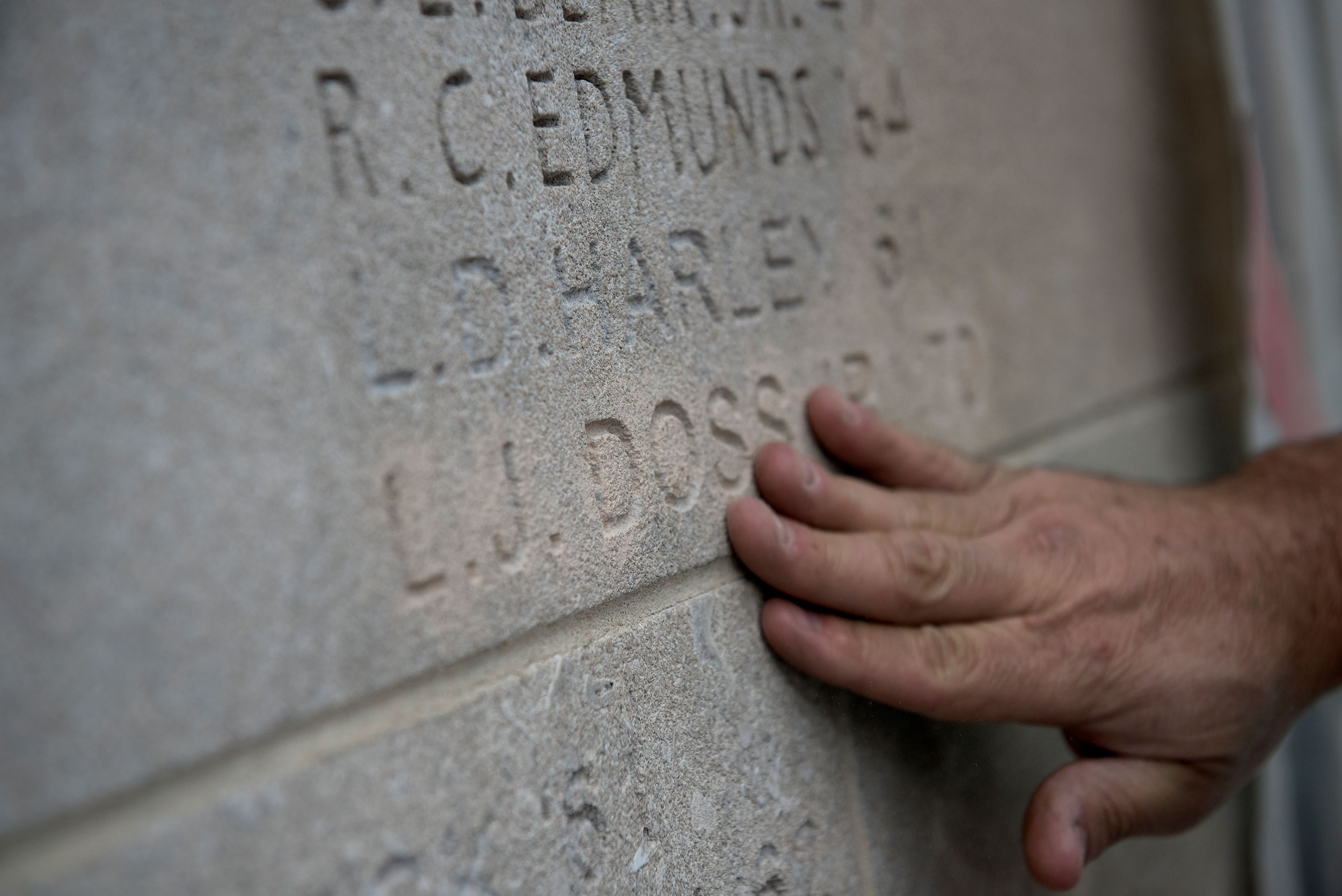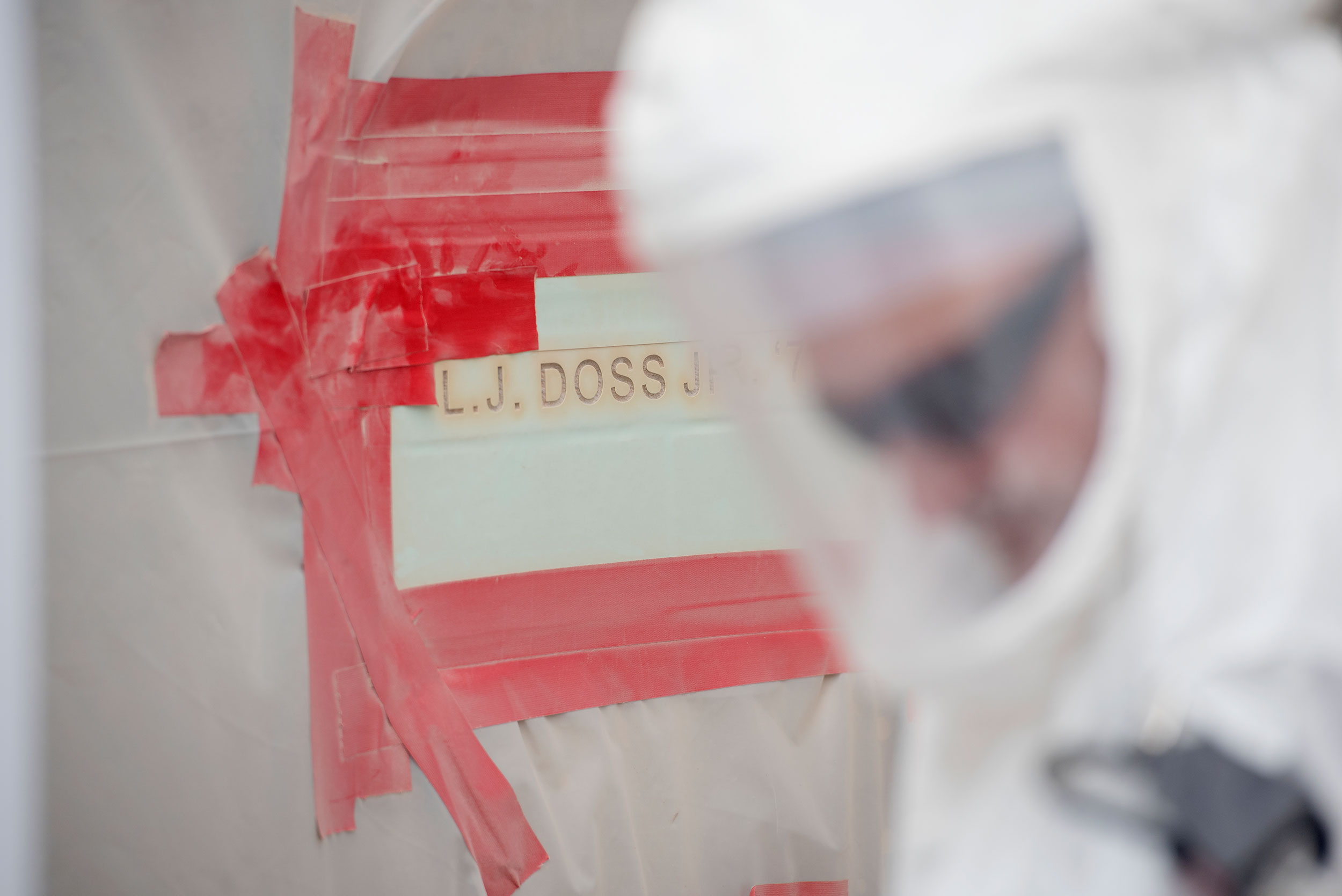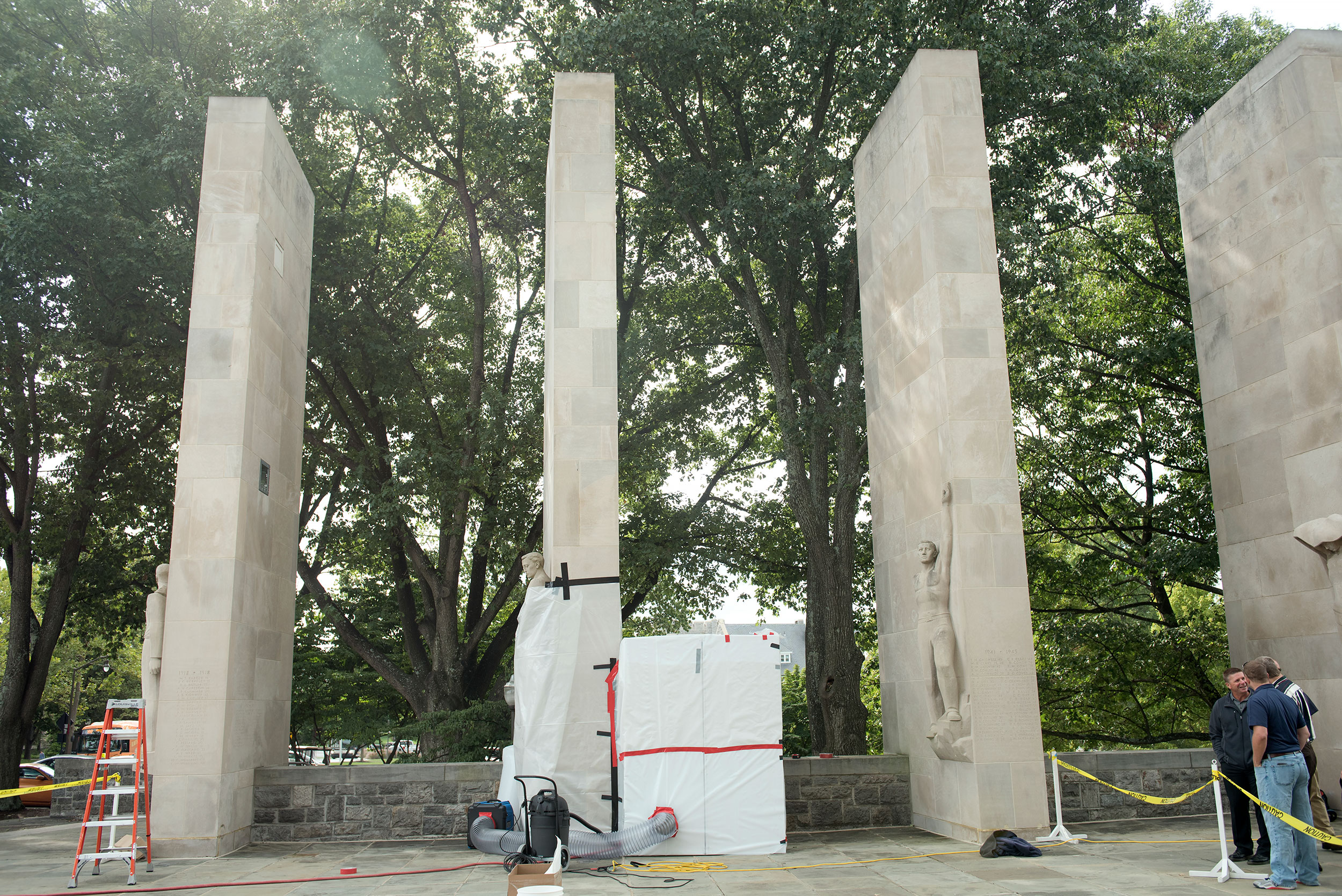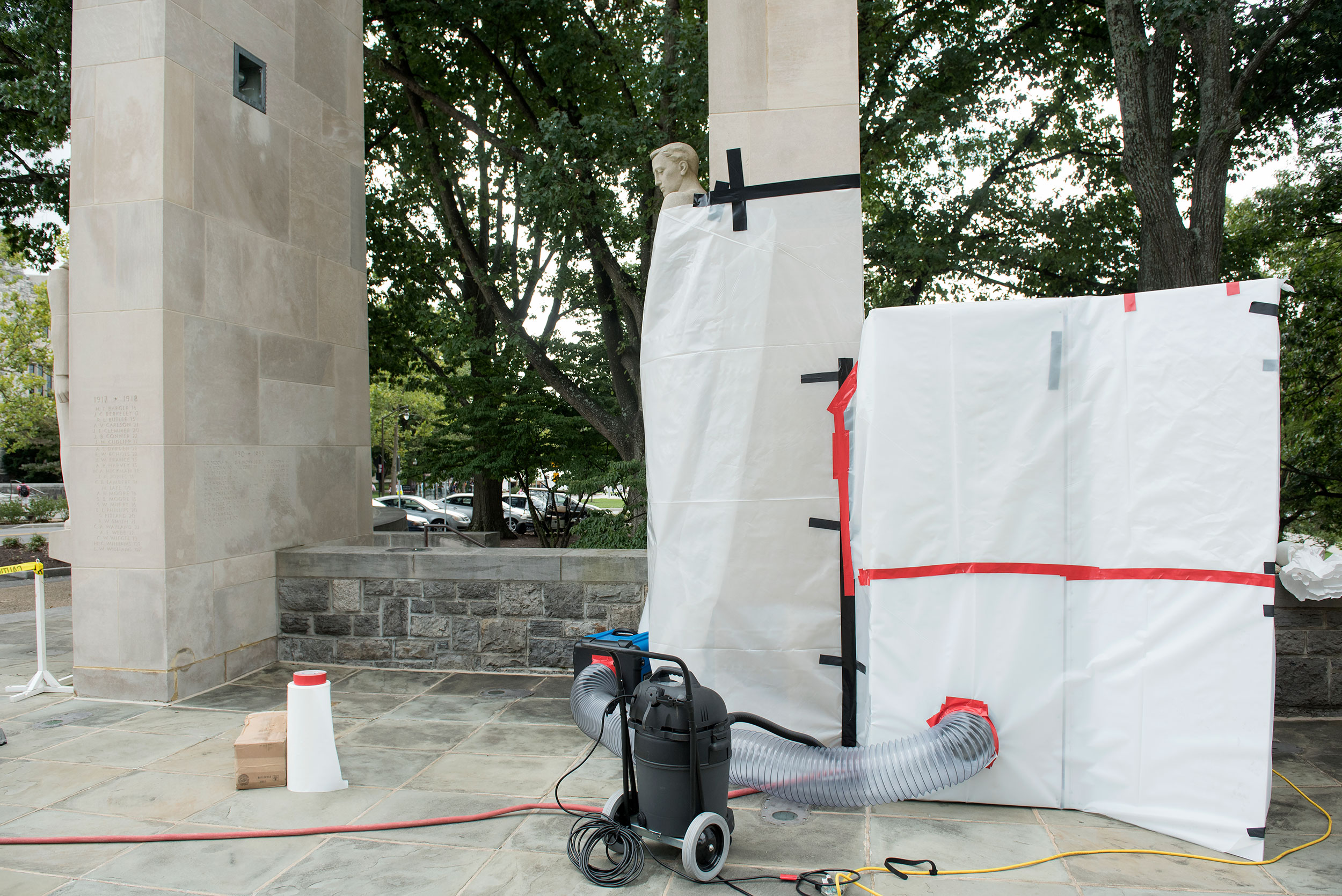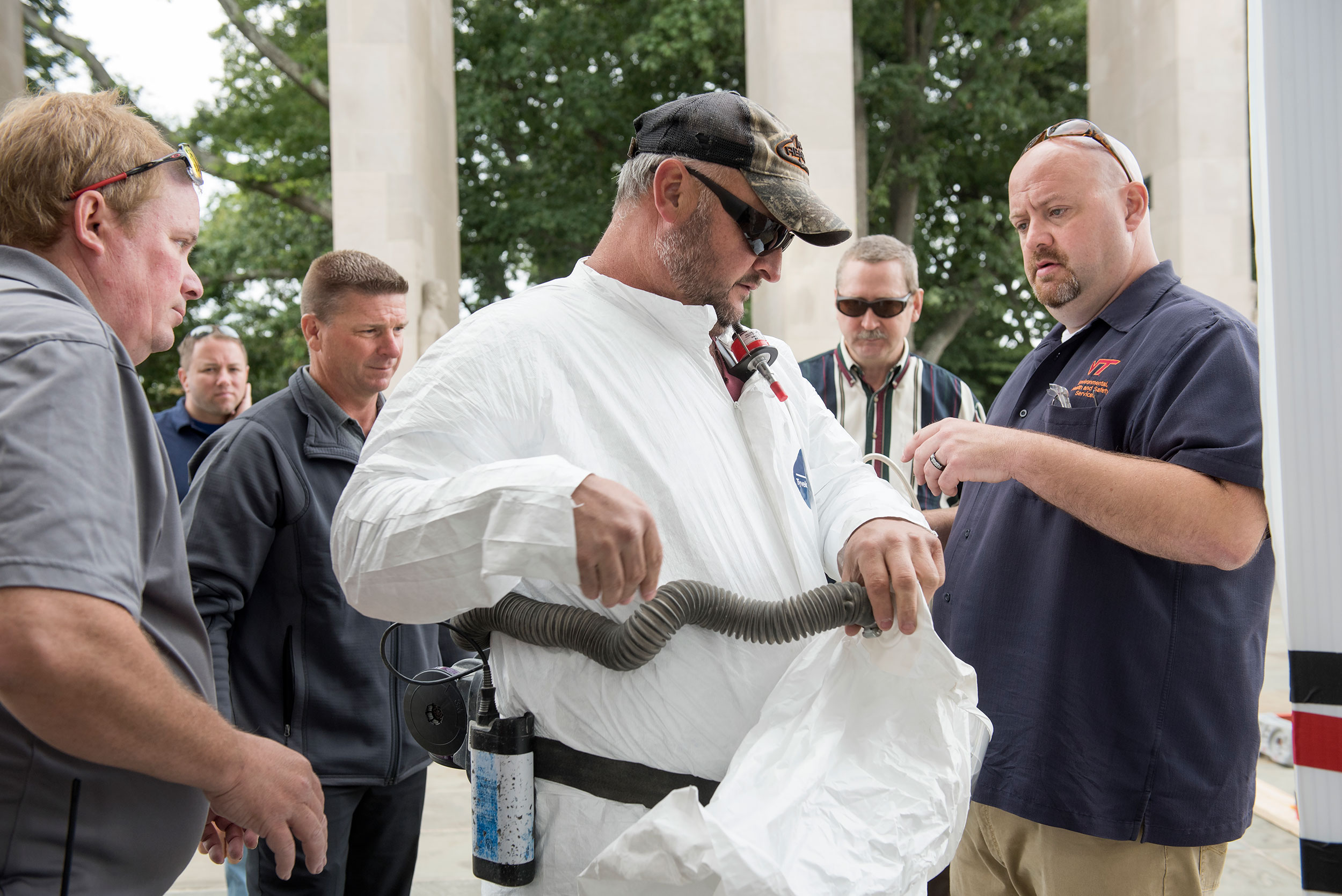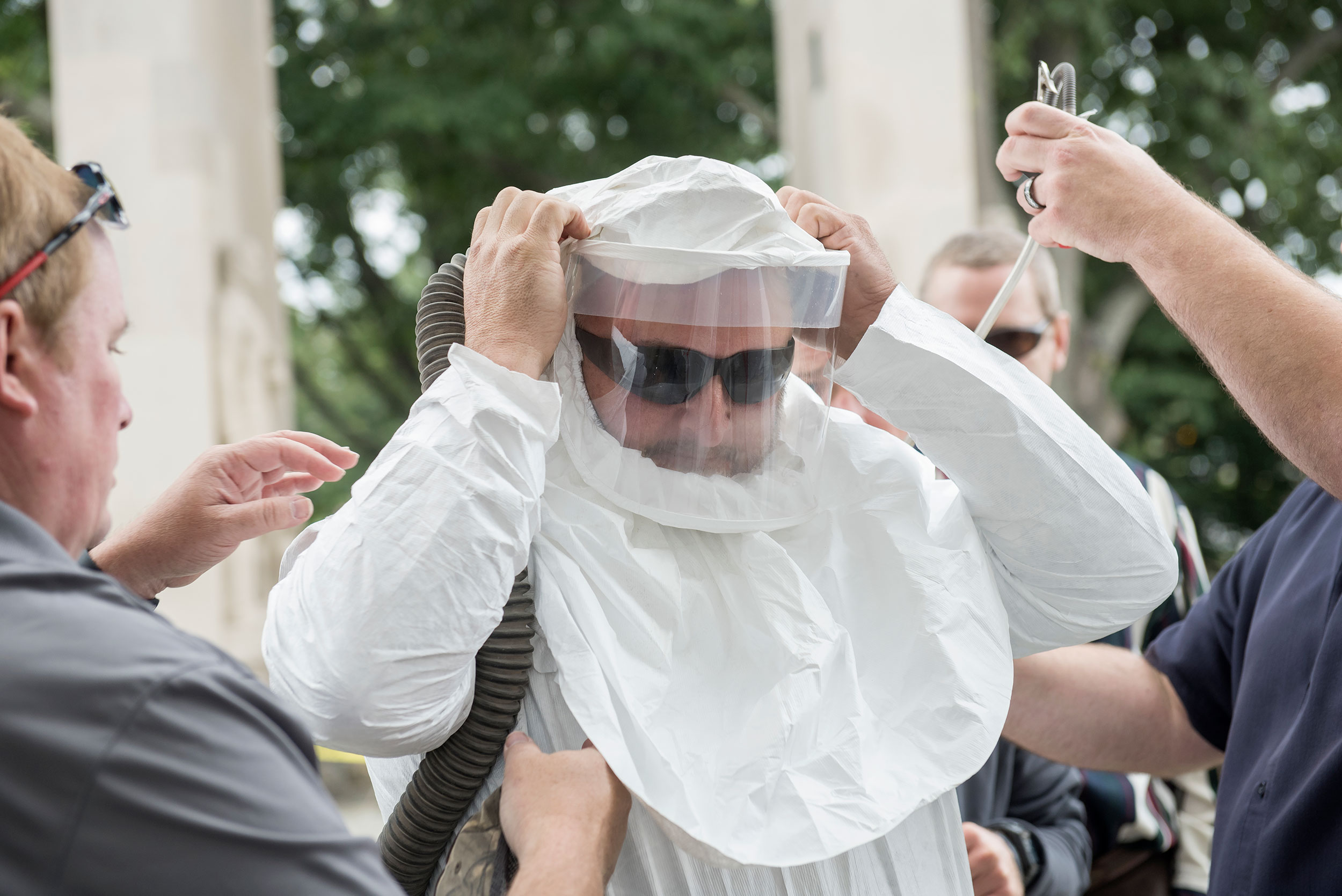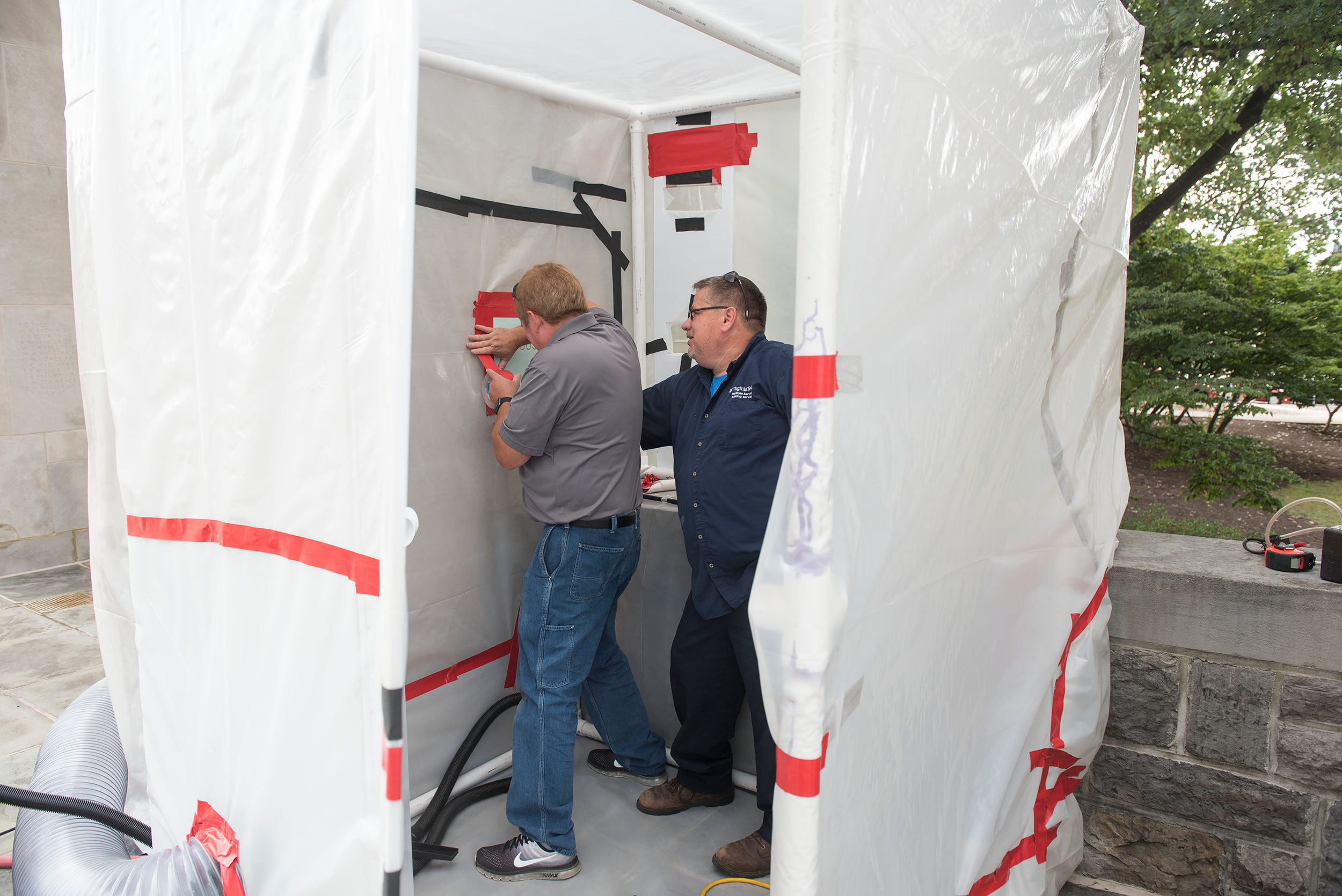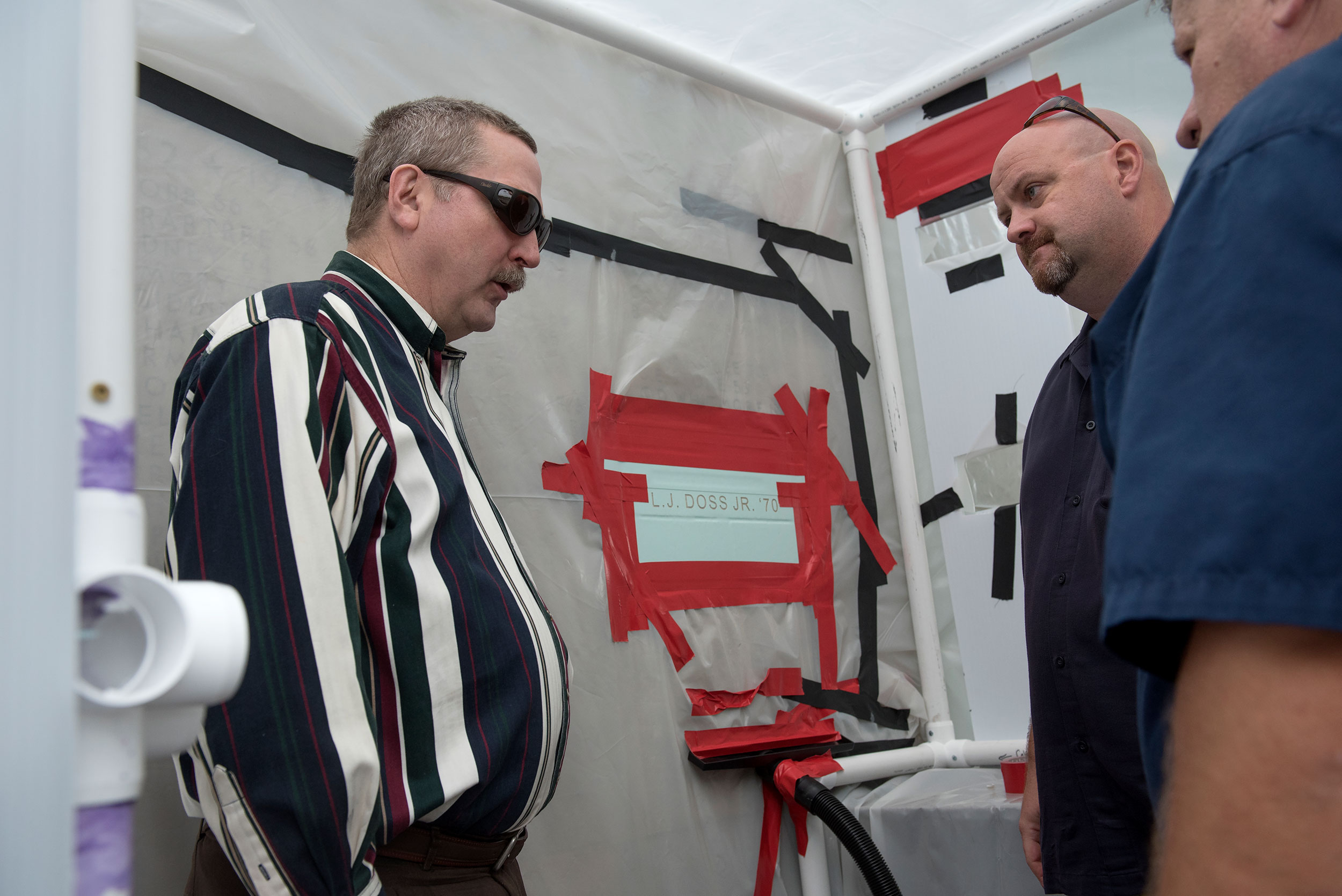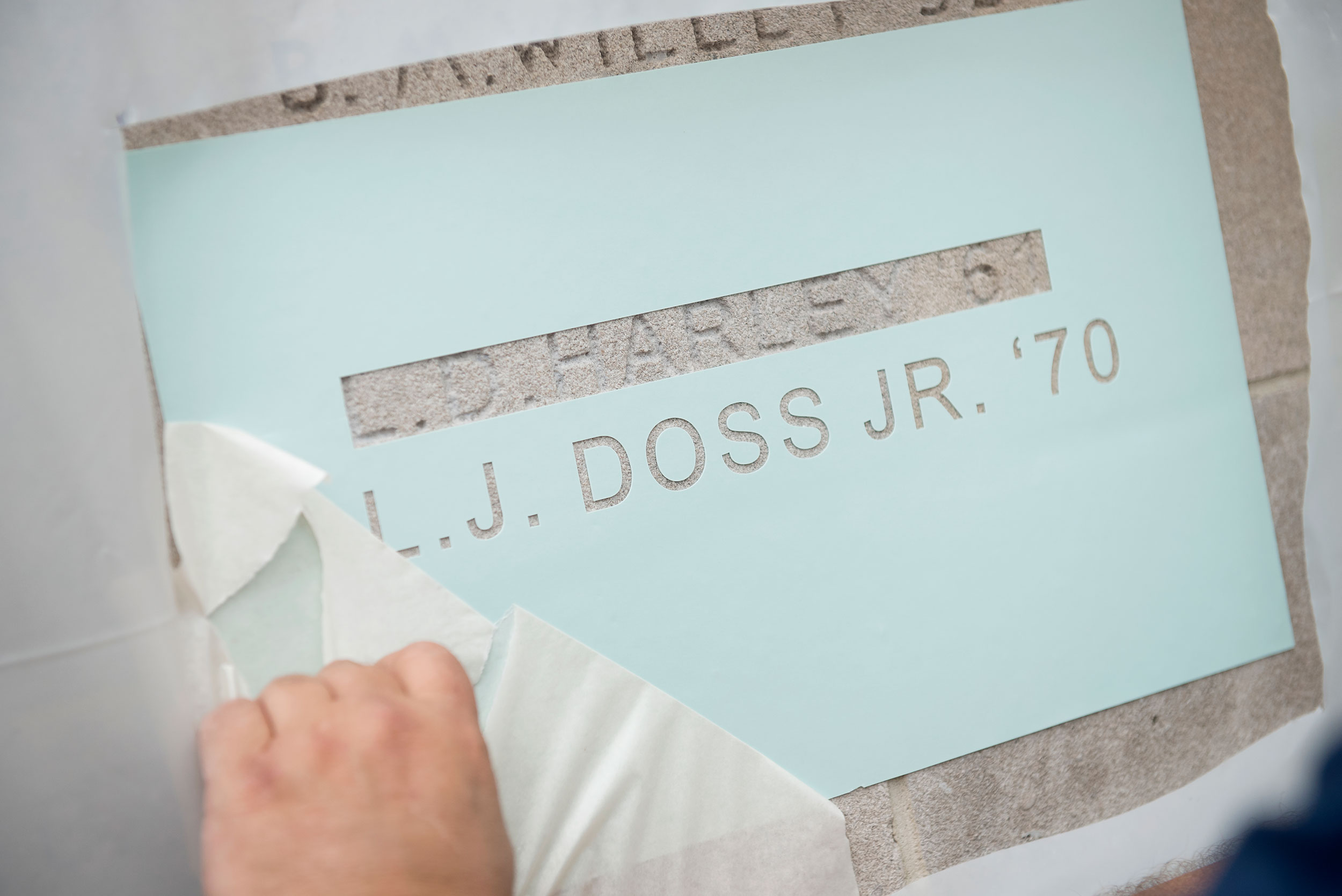by Travis Williams
Jim Doss photos courtesy of Doss family
Engraving photos by Logan Wallace
Doss left a legacy of honor and commitment to his country.
In 1967, Luther “Jim” Doss Jr. sacrificed his beloved position as a Virginia Tech student to offer his service for family and country. Nearly five decades later, the fallen Vietnam War veteran has found a permanent place on campus.
In August, Doss, a U.S. Army Ranger who was shot while attempting to rescue fellow soldiers, had his name engraved on the War Memorial Pylons, joining 430 fellow Hokies killed in military action.
Doss will be honored during a special Veterans Day ceremony on Nov. 10 at 3 p.m.
Jim Doss came to Virginia Tech in the fall of 1966, but left after just three quarters to return to Maryland with his pregnant wife. He was drafted just more than a year later. Because he did not graduate, the family never considered contacting the university about having his name added to the pylons following his death in April 1970.
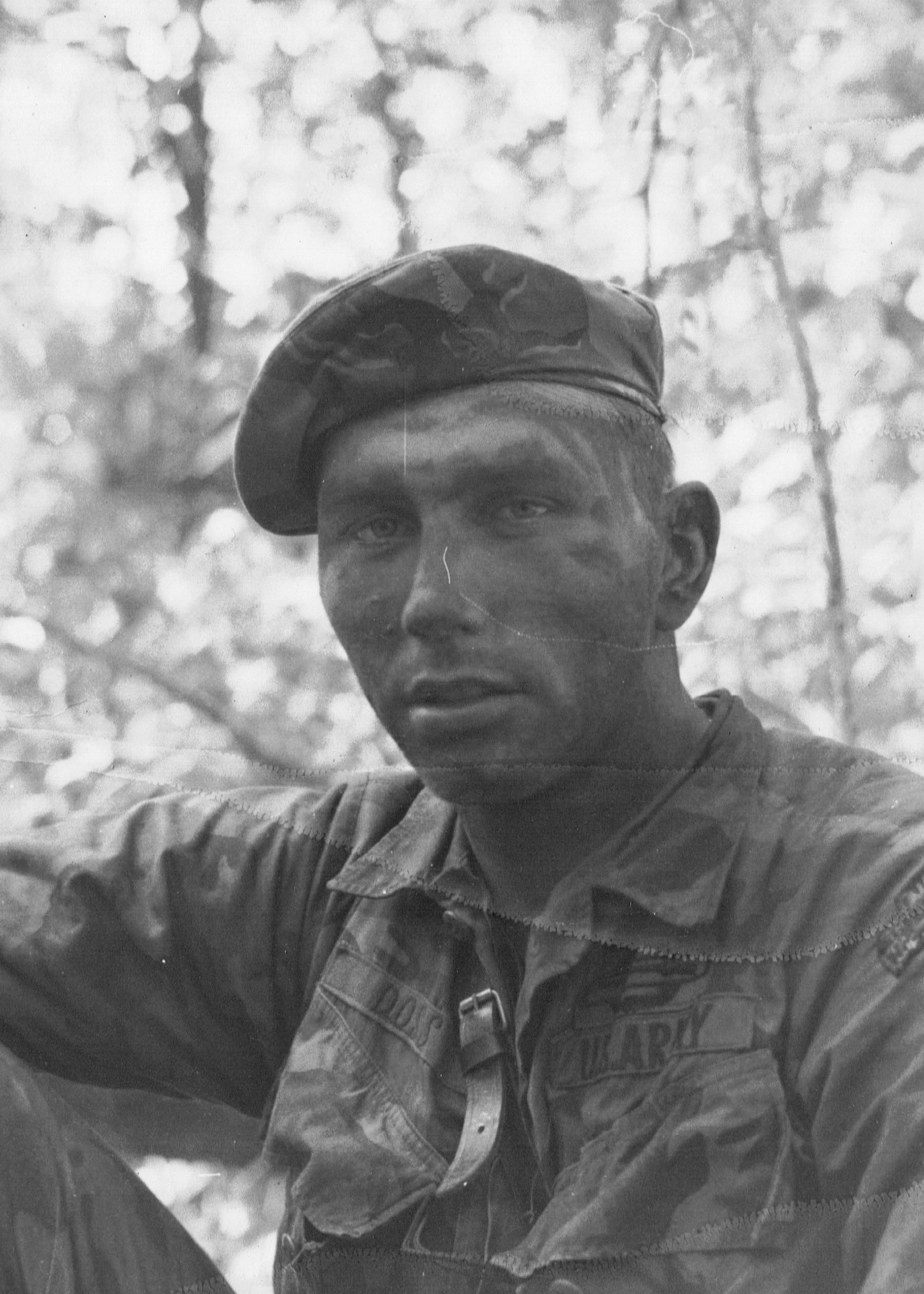
Jim Doss in Vietnam.
Almost 50 years later, the research of Dana Hesse, a 1986 graduate and brother within the same fraternity lineage as Jim Doss, paved the way for the fallen soldier’s long overdue honor. “Jim would be so very proud of that,” said Doss’ widow, Barbara Rookstool. “He loved going there [to Tech]. He thought it was the greatest thing in the world.”
Doss’ son, David Doss, said his father spent his earliest years living in Max Meadows, less than an hour southwest of Blacksburg. A first-generation college student hoping to study engineering, the son said he doubts his father gave much consideration to attending any other university, even after the family relocated to Maryland while Jim Doss was in elementary school. “Virginia Tech is a legend in that area,” David Doss said. “And I grew up in that legacy.”
Jim Doss arrived on campus in the fall of 1966 and pledged Phi Alpha Chi about a year later.
In June 1967, he attended a wedding in which he was a groomsman and met the bridesmaid who would soon become his own bride. “Actually, we only were together about six months before we were married,” Rookstool said.
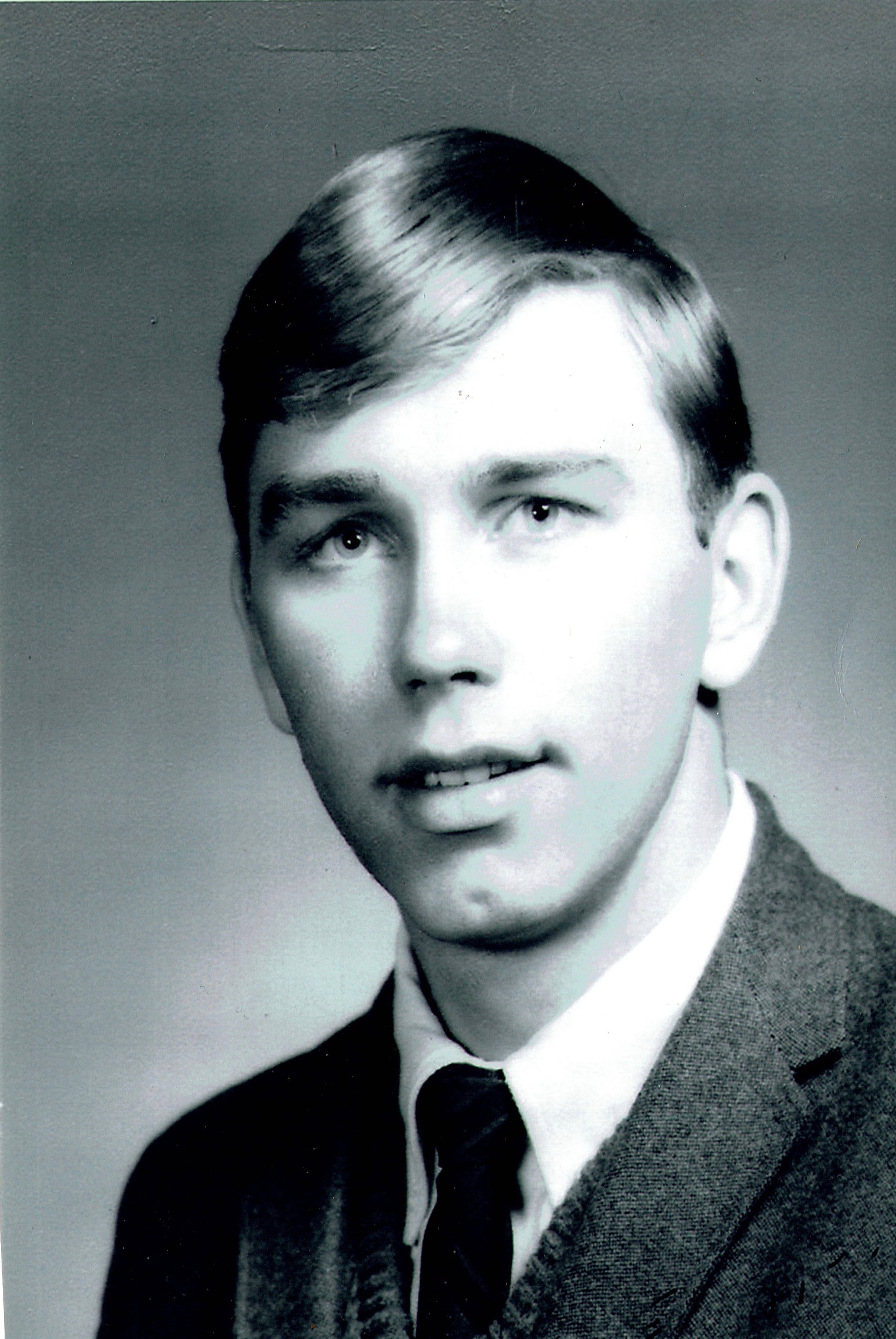
Jim Doss in 1967.
Rookstool clearly recalled her former husband’s passion for Virginia Tech and particularly for the football team, which he took her to see in Lane Stadium during one of her first visits to campus.
The couple was married in December 1967 and with a child soon on the way, Jim Doss left Virginia Tech to move home to Maryland. He was working and taking college courses part-time when he was drafted to the United States Army in February 1969. By September, he was shipped overseas.
David Doss said his father took basic training at Fort Bragg and infantry training at Fort McClellan before deploying to Vietnam, where he trained in-country to become an Army Ranger. “I think he thought, if I’m going to be a solider, I’m going to be the best damn solider I can be,” David Doss said.
Having researched his father’s military career and spoken with many soldiers with whom he served, David Doss said he learned his father quickly became a leader of Long Range Reconnaissance Patrols (LRRPs), which were routinely dropped in teams of four behind enemy lines.
“I’d say my dad did intelligence the old-fashioned way—boots on the ground behind enemy lines,” said David Doss, who has followed in those footsteps by finishing a engineering degree similar to the one his dad started at Tech and then working for the National Security Agency.
He said many of the men who remember his father recall one particular battle, which they say greatly affected the entire company.
In January 1970, Jim Doss’ four-man team was on a mission behind enemy lines when they were ambushed. Doss was the lone survivor of the attack, despite being shot in the back through his radio. “He fought off the enemy with such ferocity that they thought they were up against a larger force and retreated.” David Doss said. “He then began the task of getting the three fallen Rangers home, as the Ranger creed demands, ‘No man left behind.’”
David Doss said the servicemen recalled his father’s resolve to join a new recon team following that mission.
On April 30, 1970, a call came in from a different recon team under attack behind enemy lines and an eight-man response team was quickly assembled. “Dad volunteered for that,” David Doss said.
It was Jim Doss’ last mission, with his official cause of death listed as “small arms fire.”
David Doss said his father left Vietnam having accomplished his task—he was the best soldier he could be. In less than two years in country, Jim Doss distinguished himself as a leader among a very elite group of Rangers and was awarded two Bronze Stars for Valor in Battle and the Purple Heart. More importantly to the Doss family, he left a legacy of honor and commitment to his country, which they strive to emulate today.
Jim Doss was buried alongside family members in Meadowridge Memorial Park in Elkridge, Maryland. “They brought him home and I knew it was Jim,” said Rookstool. “I will always be grateful for that because I know there are so many others who don’t get to have that closure. One of the greatest blessings is to know that the man buried in that grave is my husband. “
Rookstool said though she never considered contacting Virginia Tech about putting her husband’s name on the Pylons, she did contact the university in hopes of negotiating a lower payment on her deceased husband’s student loans.
“Let me tell you something about Tech … They returned that to me by telling me that debt was forgiven,” Rookstool said. “For a young wife and mother that was just such a great gift of love and caring.”
That conversation was likely the last time Jim Doss was mentioned in an official manner on campus until Hesse, (electrical engineering ’86) had an epiphany while collecting fraternity scrapbooks for digitizing in the spring of 2017.
“That’s when I came across the name of Jim Doss for the first time in many years,” Hesse said. “I thought, I should know that name. Oh yeah, he was killed in action in Vietnam.”
During his time at Tech, Hesse joined the Rho Alpha Chapter of Phi Gamma Delta, commonly known by the nickname FIJI, which grew out of the Phi Alpha Chi house of which Doss was a member. He said in recent years he’d taken on the unofficial duties as the fraternity’s historian, among other volunteer graduate roles locally and at the national level.
When Hesse realized Jim Doss’ name was not on the Pylons, and after confirming with the university that Jim Doss was Pylon-eligible, he reached out to David Doss to request the family’s permission to attempt to change that.
“[David] said, ‘Absolutely,’” Hesse recalled.
Adding a name to the Pylons is a lengthy and collaborative process involving the Virginia Tech Alumni Association and the Corps of Cadets. Verifications of enrollment, death, and military records confirming a line-of-duty death must all be verified before the commandant of cadets and the vice president for alumni relations sign off on the addition.
Jim Doss’ name is the first name to be added to the Pylons since 2012.
Not only will the Nov. 10 ceremony be special for the Doss family, it will also be a cherished event for many of the soldier’s contemporary and non-contemporary fraternity brothers. “He’s going to be the only one from our tribe whose name has been engraved,” Hesse said. “This isn’t exactly a list that one strives to be a member of, but having Brother Doss immortalized on a Pylon will be both a source of pride and of solemn reflection for the Doss family and all Virginia Tech FIJI members for many years to come.”
The dedication to Jim Doss has stirred the memories and emotions of many of those who attended Tech with him, including his Phi Alpha Chi pledge brother, Chris Raines, (’70 business.) “Jim was a good guy, he had your back all the time,” said Raines. “He had an old 1956 Chevrolet station wagon and that was kind of like our Uber. It was yellow and looked like a hotrod. If anybody had to get anywhere, Jim was always ready and able.”
Raines recalled an occasion when the brothers were traveling along a back road and noticed a mobile home on fire.
“Well, Jim always being the one to help others, pulled off and ran up to the mobile home. He picked up a cinderblock and threw it through the front door to make sure there wasn’t anyone in there,” Raines said. “So even then, he was risking himself to help others.”
Bob Salter (political science and history ’69), who was also in the fraternity with Jim Doss, said the ceremony had elicited both happy and sad memories. “I had graduated just prior to Jim's death and did not know of it until I saw a note posted on the bulletin board at our old frat house while I was visiting Blacksburg later that year. I wept,” said Salter. Like Raines, Salter said he could easily see the man he knew in college growing into the military leader who took on tough assignments.
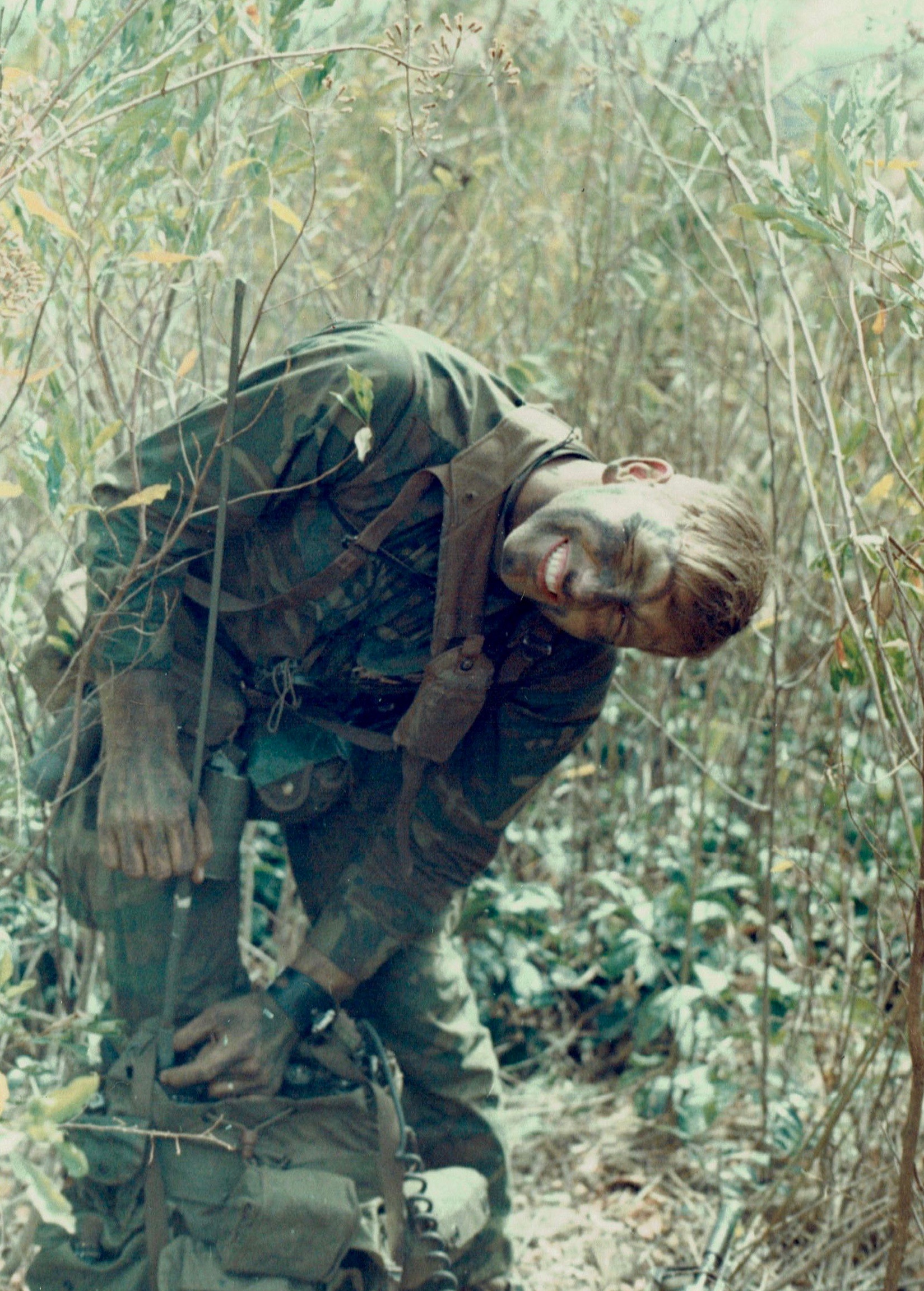
Jim Doss enjoyed clowning around even while deployed in Vietnam.
“He always had a smile on his face,” Salter said. “So many people who are athletic and somewhat physically imposing, as Jim was, are assertive and aggressive. Not so with Jim. He was a man that you just felt comfortable being around. No axes to grind. No complaints. Never any grandstanding. Always willing to chip in and do at least his share and probably more.”
Both Salter and Raines plan to be among the fraternity brothers traveling to Blacksburg for the special ceremony. The event will mark the first time Barbara Rookstool has been to campus since her husband’s death and David Doss’ first-ever trip to Virginia Tech.
David Doss, who was 2 years old when Jim Doss was killed, said the event would mark an important milestone in the 15-year journey of discovering the man who was his father.
“To me, it’s important to know and honor my dad and to tell his story,” David Doss said.
Barbara Rookstool said it brought her great joy to know her former husband would forever have a place at Virginia Tech. “It just warms my heart for Jim to have such a legacy at VPI. He so loved that school,” she said.
